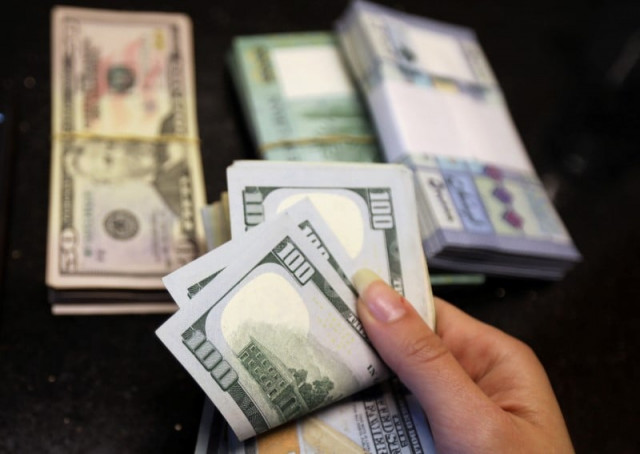REER appreciates slightly to 97.91 in Feb
US dollar continues to strengthen against major global currencies

Pakistan’s real effective exchange rate (REER) – the country’s currency value against a basket of currencies of trading partners – has slightly appreciated, but still it remains close to its fair value which means that exports have remained competitive and imports slightly expensive.
“The REER index was recorded at 97.91 in February 2022 compared to 97.04 in January 2022,” the State Bank of Pakistan (SBP) reported on Thursday.
“The meagre appreciation in REER was recorded mainly due to weakening of euro against US dollar given that Europe remains a major trading partner (export market) of Pakistan,” BMA Capital Executive Director Saad Hashmi said while talking to The Express Tribune.
“Pakistani rupee did not depreciate (against the US dollar) as much as euro did against the greenback.”
He recalled that the US dollar continued to strengthen against major global currencies over the past few days.
The REER continued to appreciate for the second consecutive month in February “despite persistent depreciation of rupee against the US dollar,” he said. Appreciation in REER in the midst of depreciation in rupee was seen due to movement in trading partners’ currencies, he said.
“However, the good thing is that the real effective exchange rate continued to remain close to its fair value of 100.” A REER below 100 means that the country’s exports have remained competitive while imports were expensive and vice-versa. A REER lower than 100 is good for countries like Pakistan whose imports are significantly larger than exports.
Meaningful growth in export earnings is a must for Pakistan as it would enable the country to overcome the widening trade and current account deficits and improve its balance of international payments.
Pakistan’s export earnings increased 26% to $20.6 billion in the first eight months (July-February) of the current fiscal year 2022 compared to $16.3 billion in the same period of the previous year. However, the import bill surged 55% to $52.5 billion in the eight months compared to $33.9 billion recorded in the same period last year, according to Pakistan Bureau of Statistics (PBS).
The domestic currency depreciated 0.43% (or Rs0.75) to Rs177.47 against the US dollar on February 28 compared to Rs176.72 a month ago on January 31.
The rupee kept on weakening during the ongoing month of March and closed at all-time low of Rs181.73 on Thursday (March 24), according to the central bank’s data.
Another expert, who spoke on the condition of anonymity, said that the latest depreciation in rupee against the greenback was a must to maintain REER at around 96-97 and keep exports competitive.
He was of the view that the central bank would opt to let the rupee depreciate till it reached around Rs185 against the US dollar. “The central bank would not intervene (would not inject dollars) in the inter-bank market to defend the rupee.”
He stressed upon the State Bank of Pakistan to intervene if it saw rupee losing its value unnecessarily and argued that undue depreciation would make imports more expensive and trigger inflation in the domestic economy. He said that continuous depletion of the country’s foreign exchange reserves would also mount pressure on rupee. The reserves dropped by over $800 million in a week to $15 billion, the central bank reported on Thursday.
He said that Pakistan could not cut its imports anymore “as we import raw material and edible commodities.”
To defend the rupee, the nation has to increase export earnings in a meaningful way, keep taking measures to surge workers’ remittances and take steps like the incumbent government did through introducing Roshan Digital Account (RDA) which encouraged the overseas Pakistanis to send additional remittances to their homeland.
Published in The Express Tribune, March 25th, 2022.
Like Business on Facebook, follow @TribuneBiz on Twitter to stay informed and join in the conversation.



















COMMENTS
Comments are moderated and generally will be posted if they are on-topic and not abusive.
For more information, please see our Comments FAQ